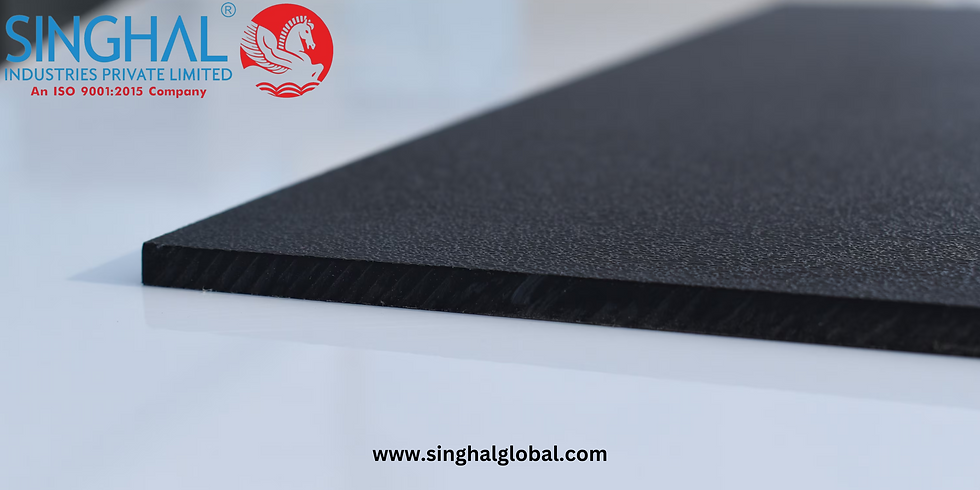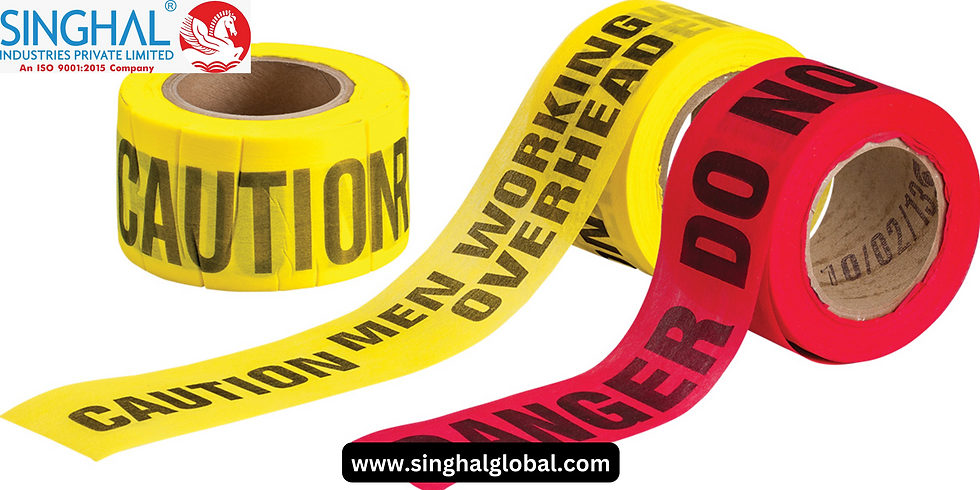Why Quality Matters: Choosing the Right Biohazard Bags
- Digital Mkt
- Aug 7, 2024
- 5 min read
In industries where safety and sanitation are paramount, biohazard bags play a crucial role. From healthcare facilities to laboratories and waste management operations, biohazard bags are essential for safely handling, storing, and disposing of potentially hazardous materials. The quality of these bags can significantly impact safety, compliance, and operational efficiency. Understanding why quality matters and how to choose the right biohazard bags is key to maintaining a safe environment.

What Are Biohazard Bags?
Biohazard bags are specialized bags designed to contain biological materials that may pose a risk to health or the environment. These materials can include infectious substances, bodily fluids, contaminated waste, and other hazardous materials. The primary purpose of these bags is to ensure that such materials are securely contained, reducing the risk of exposure or contamination.
Biohazard bags are often distinguished by their distinctive color (usually red) and biohazard symbol, which alerts handlers to the potential risks contained within.
Why Quality Matters
Safety and Compliance
The foremost reason to prioritize quality when selecting biohazard bags is safety. High-quality biohazard bags are designed to withstand the stresses of handling, transport, and disposal without tearing or leaking. This helps prevent accidental exposure to hazardous materials, protecting both personnel and the environment.
Regulations and guidelines for handling biohazardous waste are stringent. In many jurisdictions, organizations must comply with regulations set by agencies such as OSHA (Occupational Safety and Health Administration) or the EPA (Environmental Protection Agency). Quality biohazard bags are manufactured to meet or exceed these regulatory requirements, ensuring that your operations remain compliant.
Durability and Strength
Biohazard bags are subject to various physical stresses, including punctures, abrasions, and impacts. Low-quality bags may fail under these conditions, leading to potential spills and contamination. High-quality biohazard bags are made from durable materials like high-density polyethylene (HDPE) or low-density polyethylene (LDPE), which offer superior strength and resistance to tearing and punctures.
When selecting Biohazard Bags For Waste Disposal it’s important to consider the thickness of the bag and its ability to handle the type and volume of waste you are dealing with. For instance, thicker bags are generally more resistant to damage and are suitable for handling sharper or more hazardous materials.
Leak and Odor Control
One of the critical functions of biohazard bags is to contain potentially harmful liquids and odors. Quality bags are designed with leak-resistant seals and materials that prevent fluids from escaping and odors from permeating. This is essential not only for maintaining a safe and hygienic environment but also for adhering to waste disposal regulations.
Ease of Use and Compatibility
Biohazard bags should be compatible with the waste disposal systems in use. High-quality bags are designed to work seamlessly with various types of waste disposal equipment and protocols. They should be easy to seal, handle, and transport, minimizing the risk of spills during disposal.
How to Choose the Right Biohazard Bags
Assess Your Needs
Before selecting biohazard bags, assess the specific requirements of your operations. Consider factors such as the type of waste you are handling, the volume of waste, and the handling conditions. This will help determine the appropriate size, thickness, and type of bag required.
Check Material and Thickness
The material of the biohazard bag affects its strength and durability. Most biohazard bags are made from polyethylene, with varying thicknesses to accommodate different levels of risk. For example, thicker bags are generally used for handling sharper or more hazardous materials. Verify that the bags meet the required thickness and material specifications for your needs.
Verify Compliance
Ensure that the biohazard bags you choose comply with relevant regulations and standards. Look for certifications or documentation from the manufacturer that confirms the bags meet regulatory requirements for safety and performance.
Consider the Supplier
Choosing a reputable supplier is crucial for obtaining high-quality biohazard bags. Look for a Biohazard Waste Bags Exporter or a biohazard disposal bags manufacturer with a proven track record of quality and reliability. Singhal Industries, for example, is a renowned name in the industry, known for its commitment to producing high-quality biohazard bags for waste disposal.
Evaluate Cost and Value
While cost is an important consideration, it should not outweigh the need for quality. High-quality biohazard bags may come at a higher price, but they offer greater safety, durability, and compliance. Evaluate the overall value provided by the bags, including their performance and reliability, to ensure you are making a cost-effective choice.
Conclusion
Choosing the right biohazard bags is crucial for maintaining safety, compliance, and operational efficiency in environments dealing with hazardous materials. Quality plays a significant role in ensuring that these bags perform effectively, providing protection against leaks, tears, and contamination. By assessing your needs, verifying material specifications, and selecting a reputable Biohazard Disposal Bags Manufacturer like Singhal Industries, you can ensure that you are using high-quality biohazard bags that meet regulatory requirements and support safe waste management practices.
FAQ
1. What types of materials can biohazard bags handle?
Biohazard bags are designed to handle various types of hazardous materials, including infectious waste, bodily fluids, contaminated materials, and other biological substances. The choice of bag should align with the specific type and volume of waste being managed.
2. How can I ensure that biohazard bags are compliant with regulations?
To ensure compliance, select biohazard bags from reputable manufacturers who provide documentation or certification confirming that their products meet relevant safety and regulatory standards. Verify that the bags are labeled correctly with the biohazard symbol and adhere to the required specifications.
3. What thickness should biohazard bags have?
The required thickness of biohazard bags depends on the type of waste being handled. For general use, bags with a thickness of 1.5 to 2.0 mils are commonly used. For sharper or more hazardous materials, thicker bags (3.0 mils or more) may be necessary to ensure durability and leak resistance.
4. Can biohazard bags be recycled?
Biohazard bags are typically not recyclable due to their contamination and the hazardous materials they contain. It is essential to follow local regulations for the disposal of biohazardous waste to ensure safe and compliant handling.
5. How do I choose the right size of biohazard bag?
To choose the right size, consider the volume of waste you need to manage and the size of the containers or bins used. The bag should fit comfortably within the container and provide enough capacity to contain the waste without overfilling.
6. What is the difference between biohazard bags and regular plastic bags?
Biohazard bags are specifically designed to handle hazardous materials and are made from materials that offer higher strength and leak resistance compared to regular plastic bags. They are also marked with the biohazard symbol to indicate the presence of potentially dangerous contents.



Comments